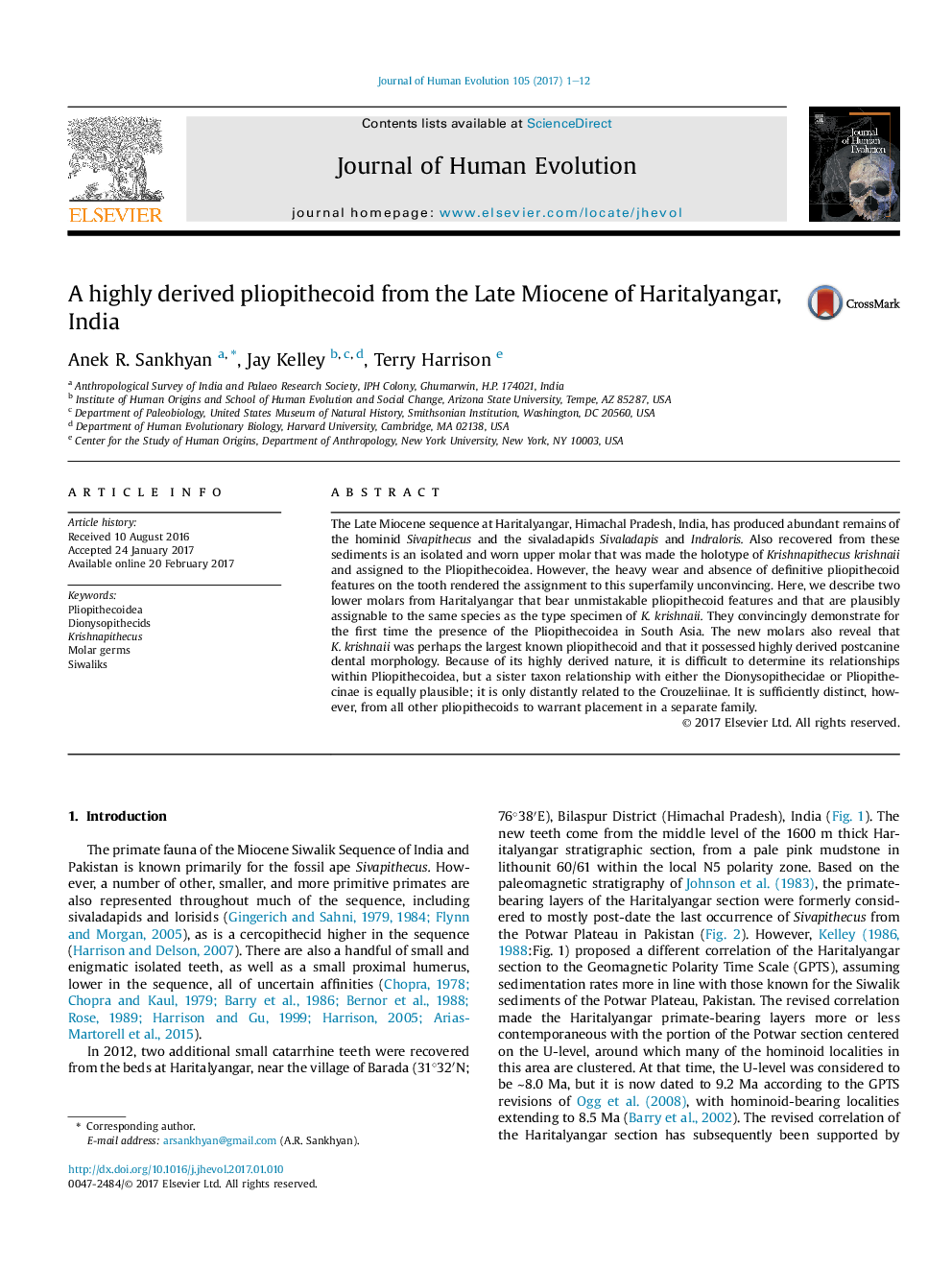| کد مقاله | کد نشریه | سال انتشار | مقاله انگلیسی | نسخه تمام متن |
|---|---|---|---|---|
| 5766874 | 1628144 | 2017 | 12 صفحه PDF | دانلود رایگان |

The Late Miocene sequence at Haritalyangar, Himachal Pradesh, India, has produced abundant remains of the hominid Sivapithecus and the sivaladapids Sivaladapis and Indraloris. Also recovered from these sediments is an isolated and worn upper molar that was made the holotype of Krishnapithecus krishnaii and assigned to the Pliopithecoidea. However, the heavy wear and absence of definitive pliopithecoid features on the tooth rendered the assignment to this superfamily unconvincing. Here, we describe two lower molars from Haritalyangar that bear unmistakable pliopithecoid features and that are plausibly assignable to the same species as the type specimen of K. krishnaii. They convincingly demonstrate for the first time the presence of the Pliopithecoidea in South Asia. The new molars also reveal that K. krishnaii was perhaps the largest known pliopithecoid and that it possessed highly derived postcanine dental morphology. Because of its highly derived nature, it is difficult to determine its relationships within Pliopithecoidea, but a sister taxon relationship with either the Dionysopithecidae or Pliopithecinae is equally plausible; it is only distantly related to the Crouzeliinae. It is sufficiently distinct, however, from all other pliopithecoids to warrant placement in a separate family.
Journal: Journal of Human Evolution - Volume 105, April 2017, Pages 1-12